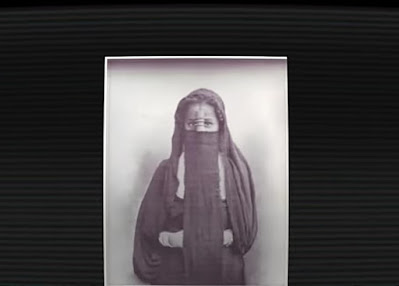On April 04, 2021 France banned the headscarf for anyone under the age of 18.
Hijabs, according to President Emanuel Macron, are incompatible with French values. On the other side, with slogans like "Hands off our Hijab," French Muslim women are claiming their right to wear whatever they want.
However, the fascination with what Muslim women wear in France, or even Europe, is not recent. And the western interpretation of the'veil' dates back to European colonization of the Middle East, if not earlier.
The arrival of the White Men
By the 19th century, European powers, especially Britain and France, had begun to colonize vast swaths of the Middle East, resulting in an influx of European visitors to the area, many of whom were enthralled by the veil.
These travelers started to write about the veil in their travel journals, literature, poetry, and photography for European audiences. They did so, however, without ever speaking to Muslim women about it.
The veil came to symbolize both Muslim women's oppression and eroticism in the colonial mind.
The Harem
Separate living quarters for men and women were built by wealthy Arab families. Non-elite families couldn't afford it because women frequently had to work outside and their homes were too small.
The harem was the area of the house reserved for women in wealthy families.
Many academics have discussed the harem, and it is a point of contention among Muslim scholars.
The harem, however, was exaggerated and misrepresented in the colonial imagination. To outsiders, the harem was a place where Muslim men imprisoned their wives and where women constantly beautified themselves in order to fulfill their husbands' insatiable sexual appetite. They even went to great lengths to build this fantasy.
Photographers from Europe rented studios to stage 'Harems' with props like water pipes and slaves. And they paid women to wear veils and pose bored and sad.
All of the visual art was accompanied by written projections of Muslim women's feelings.
A British writer, William Howar Russel, wrote about how the harem would make women insane and how Muslim women would have envied European women's rights.
Catharina Fouche, a French noblewoman who visited the Middle East in 1898, expressed pity for these women who were forced to live "useless and boring lives."
This 1893 photograph by James Buel was shown at the Chicago World's Fair. The veil was characterized by Buel as a "revolting disguise" that served as a symbol of civilisation.
Lord Cromer, Egypt's controller from 1877 to 1880, argued that the veil and women's seclusion have a negative impact on society. To colonizers, the veil was backward, symbolizing women's oppression and Islam's primitiveness.
The least civilized were the Egyptians and Algerians who wore veils. Partially veiled Indians were more civilized. Europeans who wore no veils at all were considered civilized. And by colonizing nations, they were introducing civilization to people who were previously undeveloped.
As a result, Europe's initiative to 'unveil' women, both symbolically and practically, was about 'civilizing' Muslim communities while also serving as a political excuse for colonisation.
The Erotic Flavour
Despite the veil's reputation for being backward and patriarchal, Europeans were fascinated by its mystery.
What was behind the veil?
The veil women were sexualized and begging to be seen by European eyes. The French created a fantasy of the erotic, sexual power of Muslim women when they lifted their veils and exposed their naked bodies by turning staged images of women lifting their veils and exposing their naked bodies into common postcards.
The Colonial Resistance
During the Algerian War of Independence, the veil took center stage. The French plan to eradicate Algerians' potential for resistance, according to anti-colonial intellectual Franz Fanon, based on undermining the framework of Algerian society by conquering the women and going to find them from behind the veil.
In 1958, Algerians held mass unveiling ceremonies all over the country. In public ceremonies, the wives of French military personnel unveiled some Algerian women to show that they had been won over by European ideals.
Many of the women who took part were either forced to or had never worn the veil before, according to historians.
For several Algerian women, the veil became a sign of colonial resistance in reaction to the unveiling ceremonies. Female resistance fighters also smuggled explosives using the haik, a type of dress.
Marc Granger, an official regimental photographer, was tasked in 1960 with photographing two thousand men and women in Bordj Okhriss, a village 120 kilometers from Algiers.
For the camera, the women were asked to remove their veils. He was able to smuggle 6 portraits of the women out of the country, and the images have been widely interpreted as symbols of colonial dominance abuse, even by the photographer.
During the war, Algerian women were subjected to systematic rape and torture by French soldiers. Rape was typically a 'collective act used as an expression of dominance, humiliation, and vengeance against Muslim Algerian culture and its principles of female honor,' according to Raphelle Branche, a French historian, and Algerian men were often forced to look on.
Some soldiers even took trophy photos of a naked woman standing between two soldiers, which was popular.
The headscarf, hijab, or veil of today is complicated. It can mean different things to different Muslim women around the world, but are European countries still stuck on colonial projections of the hijab when it comes to policing what Muslim women wear?
Why are laws regulating what Muslim women wear still being enacted by mainly white men who claim to value personal liberty?
Source: TRT WORLD and others



